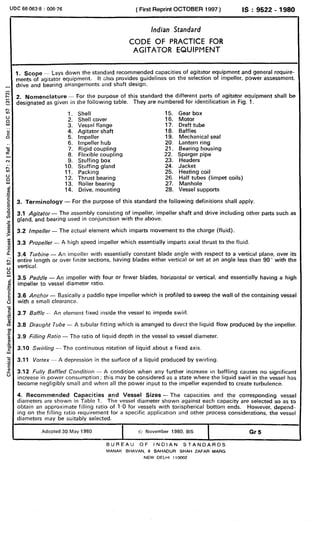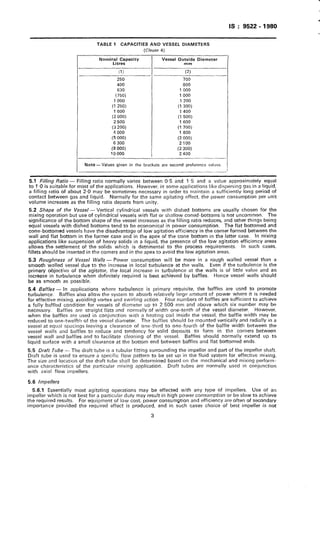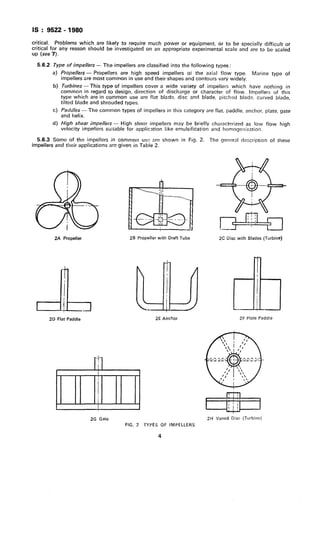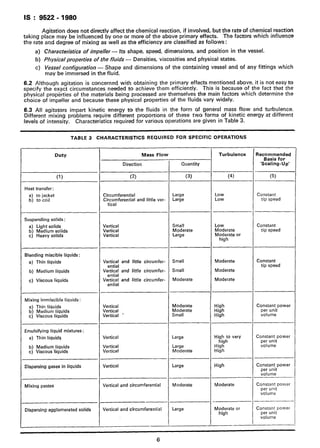This document provides information on an Indian standard code of practice for agitator equipment. It includes:
1) An introduction that outlines the standard's scope in recommending capacities and requirements for agitator equipment including impellers, power assessment, drives, bearings, and shaft design.
2) Details on vessel sizes and recommended capacities in table format.
3) Descriptions and applications of common impeller types like propellers, turbines, paddles and others.
4) Guidelines for selecting an impeller and scaling up operations based on physical processes like mass transfer, heat transfer and dispersion involved in agitation.
![Disclosure to Promote the Right To Information
Whereas the Parliament of India has set out to provide a practical regime of right to
information for citizens to secure access to information under the control of public authorities,
in order to promote transparency and accountability in the working of every public authority,
and whereas the attached publication of the Bureau of Indian Standards is of particular interest
to the public, particularly disadvantaged communities and those engaged in the pursuit of
education and knowledge, the attached public safety standard is made available to promote the
timely dissemination of this information in an accurate manner to the public.
इंटरनेट मानक
“!ान $ एक न' भारत का +नम-ण”
Satyanarayan Gangaram Pitroda
“Invent a New India Using Knowledge”
“प0रा1 को छोड न' 5 तरफ”
Jawaharlal Nehru
“Step Out From the Old to the New”
“जान1 का अ+धकार, जी1 का अ+धकार”
Mazdoor Kisan Shakti Sangathan
“The Right to Information, The Right to Live”
“!ान एक ऐसा खजाना > जो कभी च0राया नहB जा सकता है”
Bhartṛhari—Nītiśatakam
“Knowledge is such a treasure which cannot be stolen”
“Invent a New India Using Knowledge”
है”ह”ह
IS 9522 (1980): Code of practice for agitator equipment
[MED 17: Chemical Engineering Plants and Related Equipment]](https://image.slidesharecdn.com/is-9522-151005060334-lva1-app6892/85/Is-9522-1980-agitator-1-320.jpg)











